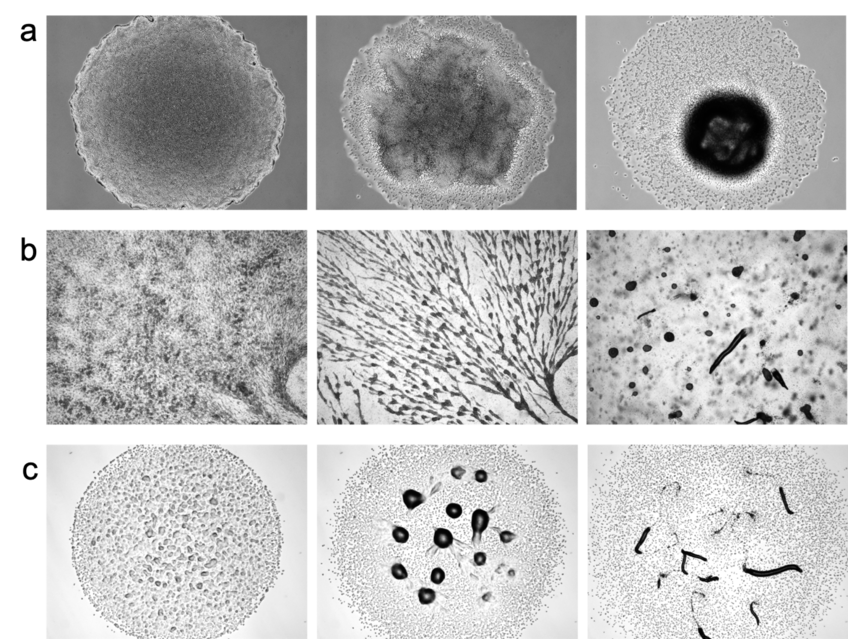Active Biological Matter
Communicating Active Biological Matter
A fascinating aspect of biological systems is the generation of complex patterns in each round of their life cycle. Higher organisms develop as a result of a highly reproducible arrangement of differentiated cells. Complex pattern formation is observed in the cells of Dictyostelium Discoideum as they aggregate into a unique multicellular organism during the starvation phase. We hypothesize that the pattern dynamics provide information that is transferable to other complex organisms, which is a fascinating problem to investigate. It is well known that in Dictyostelium Discoideum, the chemical communication is the main mechanism to initiate pattern formation. However, the dynamics of the pattern may be directly related to the physical conditions under which the cells aggregate. Considering this assumption, we study the aggregation of Dictyostelium Discoideum cells by manipulating cell-cell signaling and exposing them to the following different physical conditions:
- Influencing cell-cell communication by binding block copolymers to the cell membrane.
- Tuning the stiffness of the agar substrate to alter the signal propagation and the dynamics of aggregation.
- Interaction of Dictyostelium Discoideum with other organisms such as filamentous cyanobacteria.

Experimental studies on the communicating active biological matter. a) Aggregation pattern of Dictyostelium Discoideum on a soft, deformable agar substrate. b) Aggregation pattern of Dictyostelium Discoideum on a highly viscous hydrogel. c) Modification of cell-cell communication by binding block copolymers to the cell membrane and thereby altering the aggregation pattern.
1- Nat Commun 13, 6727 (2022). https://doi.org/10.1038/s41467-022-34484-2
2- Acc. Chem. Res. 2018, 51, 12, 2982–2990. https://doi.org/10.1021/acs.accounts.8b00215
